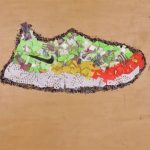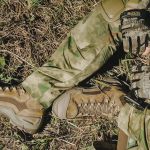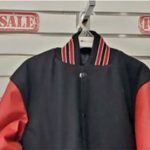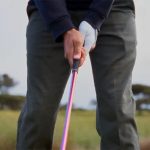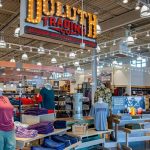With the deal environment stagnating and integration efforts under full-swing at many Bicycle, Outdoor, and SnowSports industry vendors, profits during the second quarter of 2006 slowed considerably, while retailer profits swelled to record numbers. The softgoods sector outpaced the hardgoods sector in both bottom and top-line results, while retailers profits out-paced sales by a four-to-one margin.
The B.O.S.S. Report presents an overview of second quarter industry results in the chart on page seven. Results are posted for those companies that have reported for the period ended closest to the end of June.
Total sales increased 20.0% for the quarter for the vendors tracked in this report, while net income fell 26.9% for the period. Because the report is not a clear picture of the entire industry, BOSS feels the total numbers are less significant than the trending information provided in the percentage increases and decreases.
Return on Sales for all vendors, which is the measure of net income as a percentage of sales, declined 170 basis points for the quarter versus the year-ago period, coming in at 2.7% of sales versus 4.4% in Q2 last year.
The gross margin for the reporting vendor companies averaged 33.5% of sales for the quarter, down 70 basis points from Q2 last year.
Looking at softgoods vendors, the two main reasons for the declining profits were Timberlands recent distribution rationalization and Quiksilvers integration of Rossignol, which added the ski hardgoods manufacturers seasonal losses to the bottom line. Without these two vendors added to the mix, income at softgoods vendors would have increased in the upper-teens.
However, the slow-down in earnings in this sector is not isolated to these two companies. Columbia saw its earnings slip in spite of a double digit sales increase, Rockys earnings took a big hit on slow military sales, and slowing sales of Teva footwear and declining margins caused Deckers to post flat earnings to last year.
Any growth in the softgoods sector was due to two new-comers to the sector, Crocs and Volcom, both of which completed their IPOs in the past year. Without these two companies in the mix, earnings in the softgoods sector would have declined over 40% on a 20% increase in sales.
While acquisitions were for the most part a non-issue during the quarter, two hardgoods companies contributed to the top line with significant acquisitions since Q2 of last year. Thule has been single-handedly consolidating the global car rack business and Easton Bell Sports has built another global sports hardgoods conglomerate with the merger between Easton and Riddell-Bell Holdings.
While both of these companies also reported healthy organic growth to compliment their acquisition-based top line increases, there were only three other hardgoods vendors to report any significant sales increases.
Suunto led the hardgoods sector in earnings growth, primarily due to a fire at one of the companys key suppliers last year that impacted sales and earnings.
Profits during the quarter were clearly impacted by snow sports vendors ramping up production and inventory levels in preparation for the coming season. The seasonal net loss for companies involved in snow sports increased nearly 200% this quarter, while Q2 sales increased 17%.
Generally, this sharp increase in seasonal losses could be a positive or a negative indicator for the back half of the year. Either vendors are over-producing and gambling on a good winter, or they already have considerable increases in their pre-season orders and are ramping up manufacturing to meet the demand. Judging by the healthy winter weather experienced in many of the western states last year, and relatively clean inventories at retail, the latter is more likely.
Retailers in the Bicycle, Outdoor, and Snow Sports sector have clearly shifted into the drivers seat. Sales during the second quarter jumped in the mid-teens, while profits increased nearly 60%. This shift in control was evident in the aisles at Outdoor Retailer Summer Market, with many larger vendors talking more about helping retailers boost profits than product innovation.
Sales increased across the board, with Zumiez leading the sector as mall-going teens look for a more authentic source for the action sports lifestyle. The only retailer with sales declines for the quarter was Timberlands owned-retail operation.
The battle between the big box hunt-fish retailers seems to be slowing down and the major players in the industry are focusing on profitable growth, not simply expansion for the sake of it. Cabelas saw earnings out-pace sales by more than a two-to-one margin, while Gander Mountain managed to cut its quarterly net loss by more than one fourth.
The big-box sporting goods retailers who also play in the Bicycle, Outdoor, and Snow Sports realm all posted double-digit increases in earnings, with California-based Sport Chalet leading the sector. Dicks Sporting Goods finally anniversaried all of the acquired Galyans stores and the re-merchandising seems to be paying off with positive comps.
Online and consumer-direct retail appears healthy as well, with Cabelas and Sportsmans Guide both posting strong results for their on-line and catalog businesses. GSI Commerce, which handles the on-line sales for many of the big-box sporting goods companies, saw a 30% top-line increase, but the e-tail giant saw its seasonal loss increase.
Canadian retail also appears healthy, with several reports coming in from north of the border indicating strong sales at all sports retailers. Forzani, the countrys largest sports and outdoor retail holding company, has been posting impressive results for the past three quarters.
The overall environment in the Bicycle, Outdoor, and SnowSports industry appears healthy, but it is clear that vendors are hoping for a strong winter season. In addition, the new focus on helping retailers boost sell-through and profitability, may impact the bottom line in the short term, but it should help increase sales in the quarters to come.
Editors Note: See the full Q2 vendor and retailer chart on page 7.


